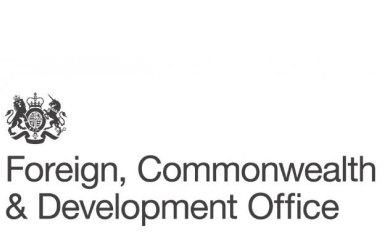The general objective of the document is to define and prioritize the ISO standards that should be adopted for the development of standards and/or guidelines associated with the implementation of BIM.
This document aims to achieve the purposes listed below, in order to establish a common basis at the regional level:
Encourage collaborative processes with international standardization entities.
Promote collaboration between normalization/standardization entities in the Latin American field.
Promote the adoption of international standards in local and Latin American frameworks.
Articulate the development of Latin American standards that support the strategies, policies and requirements of the local market.
https://redbimgoblatam.com/2023/08/15/guia-de-priorizacion-de-estandares-iso-relacionados-con-bim/
One of the main activities of the EU BIM Task Group (EUBTG) is the organization of knowledge transfer workshops. The goal of the workshops is to have active round table discussions with on-site participants using the following format:
Discussion moderated workshop without long boring presentations.
20-30 participants maximum to be able to keep discussions interesting and let any participant take an active part in the debate.
Topics and agenda of the workshop can be in advance shape by registered participants.
Outcome: Knowledge and suggestion document that will be published on the EUBTG website after the workshop
The workshops are intended for public clients and policy makers. Information about upcoming workshops is communicated through the General Assembly members of EUBTG.
India aims to spend $1.4 Trillion building Infrastructure. Prime Minister launched Gati Shakti – National Master Plan for Multi-modal Connectivity, essentially a digital platform to bring 16 Ministries including Railways and Roadways together for integrated planning and coordinated implementation of infrastructure connectivity projects with the goal of developing infrastructure to lower logistic costs and improve the economy. Digitalization and BIM will play a very important role in helping India achieve its Infrastructure Goals. CDCPIndia has been conceived by veterans from the industry who has been directly or indirectly practicing and promoting Digital ways of working in the Construction & Infrastructure Industry. Vision of CDCPIndia is to “Inspire and Collaborate with Construction Professionals across India to advance Digitally enabled Processes and Technologies in construction & Infrastructure sector”. CDCPIndia shall work in collaboration with several existing Institutions, Professional Bodies, Academia, Corporates and Government to Improve the Project Delivery & Asset Management Efficiency by use of Digital Technologies and Processes. CDCPIndia is a not-for-profit organization and has been registered as a Society under Society Registration Act
This document compiles the experience of promoting BIM, and the design and implementation of national plans, related to the methodology by the member countries of the BIM Network of Latin American Governments. The strategies and actions that public institutions in the region applied according to the BIM Initiatives of each country are identified. The intention is that this document is a point of reference for the implementation and promotion of BIM by the State, from a Latin American perspective built on the basis of the local realities of each of the countries that make up the Network. With this document , we hope to encourage the creation of support networks for the transfer of knowledge, experiences and lessons learned.
This report presents the results of a first regional survey of companies in the construction sector in Latin America and the Caribbean to better understand the slow adoption of Building Information Modeling (BIM), a new collaborative work methodology based on data models that contributes enormously to improving the productivity of the sector.
https://publications.iadb.org/es/encuesta-bim-america-latina-y-el-caribe-2020*
This CONPES document formulates a national policy for digital transformation and artificial intelligence. This policy aims to promote the generation of social and economic value in the country through the strategic use of digital technologies in the public sector and the private sector, to boost productivity and promote the well-being of citizens, as well as generating transversal enablers for digital transformation, so that Colombia can take advantage of the opportunities and face the challenges related to the Fourth Industrial Revolution (4IR). Digital transformation of construction is specifically mentioned within section 5.3.2. Create enabling conditions for digital innovation in the public and private sectors, with the purpose of being a mechanism for the development of digital transformation. On page 47 of the policy.
https://colaboracion.dnp.gov.co/CDT/Conpes/Econ%C3%B3micos/3975.pdf*
This capability assessment sets out the actions that government and industry will take to create opportunities for the UK construction sector by becoming a world leader in Building Information Modelling (BIM). We will build on the considerable progress already made in embedding BIM into the domestic sector.
https://www.gov.uk/government/publications/building-information-modelling
Archive taken in 2017 of the UK BIM Task Group Website.
https://webarchive.nationalarchives.gov.uk/ukgwa/20170712122310/http://www.bimtaskgroup.org/
Web pages of information related to the gradual introduction of BIM in public procurement under Ireland’s Capital Works Management Framework (CWMF) and defined in the 2023 contract reforms package supporting the National Development Plan (NDP)
From January 2024 the OGP, in conjunction with the Government Contracts Committee for Construction, will monitor the uptake of BIM across those public bodies who are required to use the CWMF. The timeline is subject to review, any changes will be based on feedback from this monitoring process.
https://constructionprocurement.gov.ie/bim/public-sector-bim-adoption-timeline/


